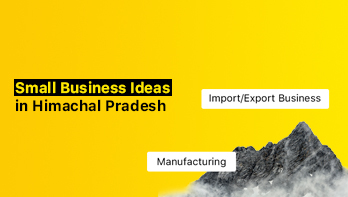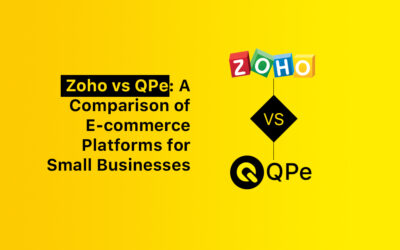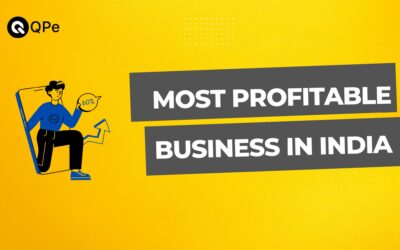You’ve spent endless nights perfecting your designs, and now it’s time to take the next big step, manufacturing your product. But where do you even start? Finding the right manufacturer can feel intimidating.
After all, this is the first time you’re handing over your vision to someone else, often a team of professionals you’ve never met, possibly in another country. It’s a lot to process, and that’s totally normal.
At QPe, we get it. Turning creativity into a thriving business takes the right support, and that’s where we come in. Our platform makes selling easy, whether you’re in B2B or B2C. Products, ideas, or both? We help bring them to life, hassle-free.
In this blog, we’ll guide you through the process of finding the perfect manufacturer. From asking the right questions to following a clear plan, you’ll get the tools to make confident e-commerce business decisions. Plus, we’ll share strategies to help you grow your business and make your vision a reality. Let’s get started.
Key Factors to Consider Before Beginning Your Search
When it comes to product manufacturing, choosing an optimal manufacturer is crucial. It’s important to do a detailed evaluation of potential manufacturers before choosing one.
Consider these factors when selecting a manufacturer:
Define Your Product requirements
A thorough understanding of your product’s requirements is necessary before reaching out to a manufacturer. This includes the type of materials, design, and quality standards.
Your blueprint will help you convey your needs, which will allow potential manufacturers to evaluate their capabilities.
Production Capacity and Scalability
Make sure that the manufacturer can meet your current and future expectations. Furthermore, inquire about their capability to increase production in response to rising demand or market changes.
You can expand your business with the support of a manufacturer who can scale production, maintain quality, and deliver on time.
Experience and Proficiency
Select a manufacturer that possesses significant experience and proficiency in the production of your particular product category.
Manufacturers with extensive experience are more adept at foreseeing challenges, providing valuable insights, and delivering solutions to enhance production workflows.
Cost and Pricing Structure
Plan a realistic budget that includes production costs, shipping expenses, and any applicable tariffs. Explore industry pricing to understand what is realistic within your financial limits.
It is essential to find a balance that meets your product goals and market strategy as lower prices may sometimes result in poor quality.
Effective Communication and Collaboration
Good communication can make or break a brand. Building a solid relationship with a manufacturer depends on how well you work together and stay on the same page.
Pick a manufacturer who’s upfront, answers quickly, and stays involved at every step. You want someone who treats this like a partnership, not just another transaction.
Types of Manufacturers
Many factors determine how manufacturers are classified, including their size, location, and method of production. The following is an overview of the primary categories of manufacturers.
Domestic vs. Overseas Manufacturers
| Factors | Domestic Manufacturers | Overseas Manufacturers |
| Location | Located within the same nation as your enterprise. | Located in a different nation. |
| Cost of Production | Increased production expenses due to labor, raw materials, and regulatory compliance. | Reduced production expenses, particularly in emerging economies. |
| Quality Control | Simplifies the process of monitoring and upholding standards. | Can present difficulties and may necessitate inspections by external parties. |
| Communication | Communication is more efficient without the complications of language or time-zone barriers. | Individuals may experience challenges related to language and time-zone differences. |
| Shipping Expenses | Reduced expenses as a result of domestic logistics. | Increased expenses due to international shipping. |
Small vs. Large Manufacturers
| Factors | Small Manufacturers | Large Manufacturers |
| Production Capacity | Reduced capacity; appropriate for small-scale production or emerging businesses. | Increased capacity; well-suited for high-volume production. |
| Customization | It tends to offer greater flexibility for customer orders. | Standardized processes result in reduced flexibility. |
| Cost Efficiency | The unit cost is greater for small orders. | Large orders achieve a lower cost per unit. |
| Scalability | There may be difficulties in scaling to meet increased demands. | It is adequately equipped to manage scaling necessities. |
| Customer Focus | More inclined to collaborate with smaller clients. | Prioritizes larger clients or significant order volumes. |
How to Find the Manufacturer of a Product
After deciding whether to produce locally or internationally, it’s time to evaluate manufacturers. Here’s how you do it in five simple steps:
Research Product Labels and Company Information
The easiest way of finding out who the manufacturer is can be determined through the label of the product. In most instances, manufacturers avail at least some of the key information such as:
- Company Name and Logo: Many products bear the name of a manufacturer or its logo on the product.
- Contact Information: Consider an address, website, or customer service number.
- Country of Origin: Labels stating “Made in [Country]” often hint at the source. Some products have a barcode or serial number that can be deciphered to track down the manufacturer.
Leverage Online Resources and Manufacturer Databases
The internet provides several tools and databases to trace the origin of a product. Some methods include:
- Search Engines: In a search engine, you need to type in the product information or the identifier, barcodes, or model numbers.
- Online Marketplaces: Websites such as Alibaba or Amazon, at times, have manufacturer details related to specific products listed on their sites.
- Manufacturer databases: Proprietary directories, like ThomasNet or Kompass, list manufacturers by product type or industry.
Besides that, some social media platforms or forums help connect people with experts and other users of the product to provide them with valuable insights.
Contact Retailers or Distributors for Manufacturer Information
Retailers and distributors often know a lot about the products they sell. They act as the link between manufacturers and customers. If you need information about a product, start by reaching out to the store or website where you bought it. You’ll usually find their contact details on your receipt, the product packaging, or their website.
When you contact them, be specific. Share the product name, model, or SKU number. This helps them identify the exact item you’re asking about. Also, explain why you’re reaching out. Is it for a warranty, bulk purchase, or tech help? Being clear saves everyone time.
How to Ensure Reliable and Ethical Sourcing
Ethical sourcing isn’t just a fancy term you toss around in meetings. It’s about making sure every step in the manufacturing process does the right thing. Simple, right?
Here’s what that looks like:
- Treating workers fairly. No cutting corners on wages or working conditions.
- Taking care of the planet. Manage waste responsibly and reduce the mess we leave behind.
- Following the law. No shady shortcuts or loopholes.
At its core, ethical sourcing means running a business with a conscience.
Review Current Supplier Partnerships:
Begin by reviewing your existing supplier relationships. Determine whether their operations are in accordance with your established values and sustainability guidelines. Consider utilizing surveys or conducting on-site audits to evaluate their labor practices, environmental policies, and dedication to ethical sourcing.
Ensure Adherence to Current Laws and Regulations
In the process of selecting a supplier, it is important to convey your company’s expectations so as to ensure that they follow local and international laws and regulations. You can also consider joining trade associations that promote a code of conduct for your industry. This makes it easier for the suppliers to comply.
Adhere to Ethical Purchasing Practices
You can commit to ethical purchasing practices that do not compel suppliers to overlook social and environmental standards. By promoting ethical purchasing practices, companies can help suppliers establish realistic production timelines. This also helps in reducing the likelihood of compliance violations by the suppliers.
Formulate a Responsible Sourcing Strategy
When selecting suppliers, it is important to not only focus on traditional factors but also to consider their commitment to ethical sourcing. This includes evaluating how well they follow ethical practices in areas like labor standards, environmental impact, etc.
Establishment and Oversight
Set up a program to monitor your suppliers’ compliance with your sustainability policy. This could include regular audits, progress reports, and maintaining open communication channels.
Make your sustainability policy publicly available and provide regular updates to stakeholders about your progress.
Steps to Get a Product Made – Idea to Production
The following are the essential steps involved in the production of a product concept.
Define your concept
Got a great product idea? Awesome. Now, let’s take it up a notch. Spend some time improving the concept. Think about how it works, what it looks like, and why someone would want it. A clear plan makes everything easier.
Write a quick summary of your idea. Include the design features and explain how it’ll work for users. It doesn’t have to be fancy. Just enough to get the main points across.
You can also use an inventor’s journal. It’s a game-changer. These journals often come with grids for sketches, tips for developing your product, and even sections for patent-related stuff. Keeping everything organized now can save you a lot of headaches later.
Investigate your target market and potential customers
The next stage requires you to take a step back, observe, and listen intently. This stage is critical as it is necessary to gain insights into your market, competitors, and past successes early in the product development process.
Without conducting market research, your approach will be based on mere assumptions.
Design your product
The subsequent part is all about nailing down how your product will work. Start with brainstorming.
Grab a pen and sketch out quick ideas. Focus on how it will look and what it needs to do. The goal? Create something that looks great and works even better. Keep it simple and practical. That’s what makes a product stand out.
Engineer a manufacturable new product
This phase is designed to provide a complete definition of a manufacturable product. It includes all desired features and functionalities.
This process is commonly known as detailed design and is an ideal moment to apply lean product development methodologies.
Locate Your Manufacturing Collaborators
As you initiate the engineering process, it is important to identify your manufacturing allies. These firms will be responsible for transforming your design into a sellable product. It is essential to find them at this stage, as their expertise will help shape the design for effective manufacturing.
Make your vision a reality with Qpe! Our flexible e-commerce platform makes B2B and B2C transactions easy. Need reliable manufacturers? Got a product idea to launch? Qpe keeps everything smooth and simple from start to finish.
Turn your ideas into products that sell. Let’s make it happen. Get started today!
Testing and Validation
Start developing a product prototype once your product definition is clear. A physical prototype will help identify design issues and enhance your market research.
It allows you to inspect the visuals of the product, evaluate its performance, gather feedback from potential customers, and explore different alternatives.
Plan the Production
The planning phase for producing your new product starts at the end of the engineering and prototyping process.
In this phase, production planners, manufacturing engineers, quality engineers, and supply chain experts work together to convert the final product design into a supply chain diagram, a production strategy, and a quality control framework.
Manufacture your new product
Commence the manufacturing of your new product. After successfully navigating the earlier stages, it is now time to enter the production phase.
However, the duties of you and your product development team remain ongoing. Successful production is a repetitive and interactive process that requires continuous engagement.
Frequently Asked Questions (FAQs):
Where to Find Manufacturer Coupons?
Manufacturer coupons can be found through multiple avenues. You can visit brand websites, subscribe to newsletters, or engage with social media accounts to discover exclusive promotions. Furthermore, you can also take advantage of coupon databases and applications such as Honey, or examine local newspapers for coupon inserts.
What is Product Manufacturing?
Product manufacturing is the process of converting raw materials into finished goods through various methods of processing. It involves machinery, labor, and technology in developing goods that meet up with consumer demand.
This stage covers various industries to ensure that products meet the quality, functionality, and scalability needs of market demand.
How to Get a Product Made?
Start with defining the idea and the target market. Once it is done, design the product in detail. After that, research about the selection of manufacturers or suppliers for the best quality and cost. You should also get funding if required.
Start production along with the manufacturing partner in order to test and refine it. Finally, work on packaging, marketing, and distribution until the successful launch.
What Are the Benefits of Using a Sourcing Agent?
A sourcing agent simplifies procurement by hooking up businesses with reliable suppliers. He does so by making sure that the cost-effective deals are paid for, quality is controlled, and deliveries are on time. They navigate language barriers, cultural nuances, and logistics that help save time and resources.
Conclusion
The process of finding an appropriate manufacturer requires thorough investigation, effective communication, and a strategic framework. While this undertaking may appear challenging, the value of establishing a reliable manufacturing partnership is profound.
Ready to grow your business with QPe? We’ve got you covered. B2B, B2C—whatever your focus, we make things simple. Flexible pricing? Check. Bulk orders? Easy. Personalized services? You got it.
QPe helps you connect with all kinds of customers, whether it’s individuals or big companies. Ready to see what we can do together? Explore QPE now!



